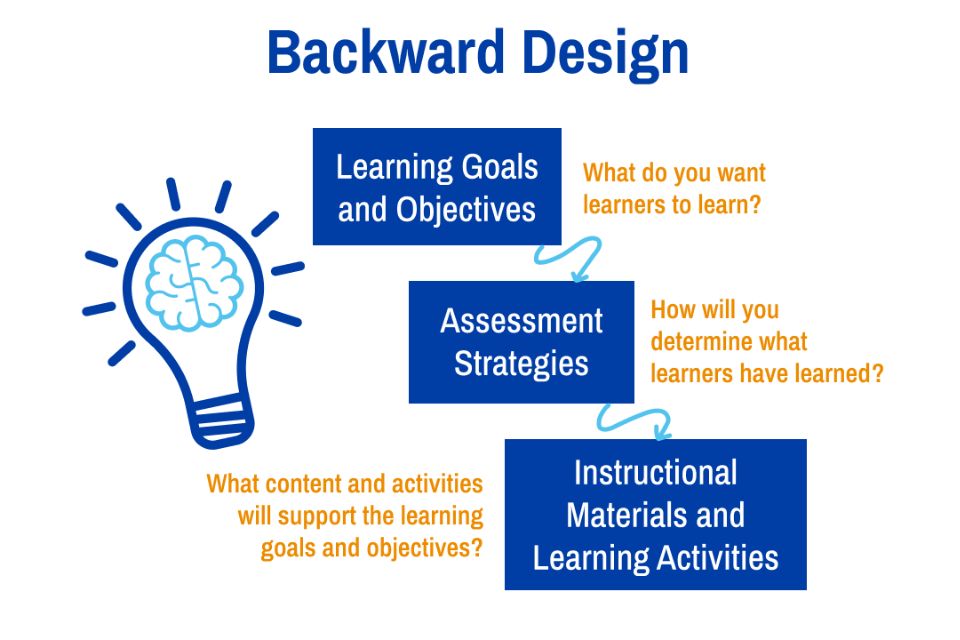Backward Design in Competency-Based Medical Education
Educators may now be familiar with the Accreditation Council for Graduate Medical Education’s (ACGME) recognition of competency-based medical education through their introduction of Milestones for Residents and Fellows.
However, members of clinical competency committees and other stakeholders responsible for developing curriculum in graduate medical education may wonder how to design learning experiences that are indeed competency-based, especially those who may not have had formal training in curriculum design. Carraccio and colleagues developed a four-step process for operationalizing competency-based medical education that ACGME referenced in their Milestones Guidebook:
- Identify competency
- Determine competency components and performance levels
- Evaluate competency
- Perform an overall evaluation of this process

But how to specifically incorporate competencies into a curriculum? Enter Backward Design, a curriculum development framework. Curriculum can be understood as a “planned educational experience” including anything from a lecture to a course to a full rotation or clerkship. There are three steps to using Backward Design to develop any curriculum:
- Determine learning objectives: Are there one or more competencies to which you would like the learning experience to map? What do you want the learner to be able to demonstrate by the end of the learning experience?
-
Develop acceptable evidence: How do you plan to assess whether the learner has met the objectives? Will you use formative or summative assessment methods? When will the assessment take place?
- Plan learning experiences and instruction: What instructional strategies will you use? How will they be tailored to the assessment methods? Remember that tailoring learning experiences to the assessment strategies helps learners to understand how the assessment reflects what they are learning, supporting greater assessment accuracy.
This curriculum design process is “backward” in the sense that educators develop the assessment strategies before the instructional activities. In traditional curriculum design, teaching methods instead are developed before the assessment is designed, creating a misalignment between what is being taught and how that knowledge is assessed. By matching the instructional activities to the assessment strategies (which are in turn based on the learning objectives), educators are better able to determine whether their learners are understanding the content. By beginning with the end in mind, Backward Design enables results-focused rather than content-focused teaching. This difference is especially critical in medical education, where the result of the learning process may directly impact the health outcome of a patient.
Backward Design readily lends itself to the enactment of competency-based medical education. Combining the steps to operationalize competencies with those of Backward Design yields a complete curriculum design strategy in support of competency-based medical education. The following steps outline a process for developing a competency-based curriculum using Backward Design.
- Determine the learning objectives after identifying and defining the expected learner competency.
- Define acceptable evidence to determine competency performance levels and develop corresponding assessment methods.
- Plan learning experiences and instructional methods in alignment with learning objectives and expected learner competency.
- Deliver learning experiences.
- Perform learner assessment to determine the competency performance level.
- Evaluate the process by considering both the result of learner assessments and an evaluation of the curriculum planning and delivery strategy. Have an expressed goal to iterate over time through multiple delivery cycles.
The ACGME Milestones were developed as a foundation for competency-based medical education. Utilizing Backward Design and operationalizing the competencies to develop a curriculum can help to ensure that competency-based medical education is outcomes-based and learner-centered.
About the Author

Tara Ernst, Ph.D.
Tara Ernst, Ph.D., is the senior education specialist and adjunct instructor of Internal Medicine at SSM Health and the Saint Louis University School of Medicine. Tara’s areas of professional interest include curriculum development, professional development, and qualitative research methods. Tara can be found on LinkedIn or contacted via email.